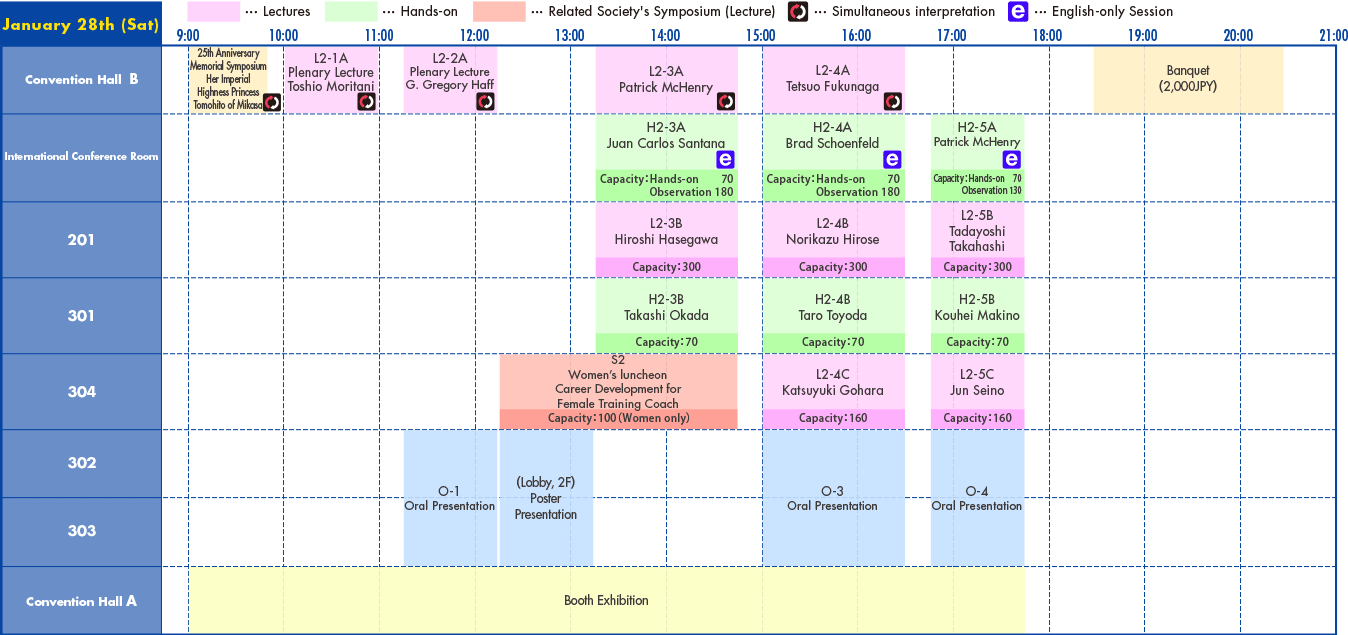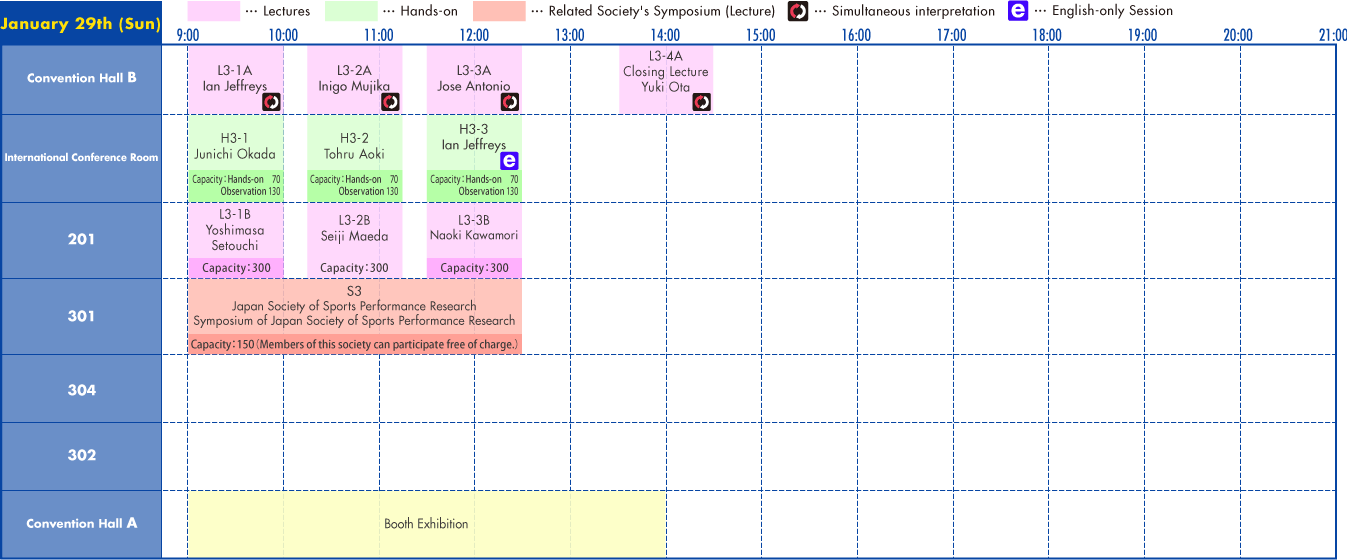*Please note that the schedule of Oral Presentations are subject to change depending on the situation.
Outline of Lectures
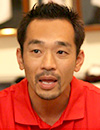
- Kazuhiko Tomooka
- CSCS, ATC
General Manager and Performance Director, Dome Athlete House
Lecture material Download
(Participants Only)
L1-1Friday, January 27, 10:00am~noon
Integrated training to improve performance in "swing" sports
From posture improvement to strength development
In this lecture, the topic discussed will be the requirements of efficient rotational movement, which is a common element of swing and throwing actions in sports such as baseball, golf, and tennis. Programs for improving those elements from a kinematic, developmental kinematic, and functional anatomy perspective are also explained. In the end potion of the lecture, a number of effective and efficient methods that can facilitate correction of alignment, activation, mobility and motion control, and strength development from a variety of training methods that have been put forth in recent years are selected and combined to be introduced as a single, integrated training program.

- Kiyotaka Komatsu
- CSCS,*D, Board Member of NSCA Japan
American Club
Lecture material Download
(Participants Only)
H1-1Friday, January 27, 10:00am~noon
An approach for improving hip joint mobility
The hip joint is known as the body's principal engine since it is the largest joint in the body that located very close to the center of the body and has a large range of motion in various directions. Restriction of its range of motion not only limits the amount of power the body can develop, but also leads to compensatory movements in the form of improper movement of other joints located close to the hip joint, such as the lumber vertebrae and knee joint, that basically work as important stabilizers. In this lecture, how important motions of the hip joint in each of several positions will be described and methods for improving its mobility will also be presented or demonstrated.
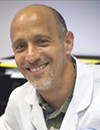
- Douglas Kalman
- PhD, RD, FACN, FISSN
Sports Nutritionist and Physiologist, Blackzilians (U.S.A.)
Director of Sports Nutrition, Florida International University (U.S.A.)
Lecture material Download
(Participants Only)
S1-1Friday, January 27, 1:00pm~4:15pm
Nutritional Strategies and Novel Nutrients for Weight Restricted
Sports and Performance
In this lecture, an outline of each energy system will be reviewed at first, then nutritional strategies for athletes who are under weight limitations such as wrestlers, judo athletes, and boxers will be introduced. In order to pass the weigh-in before matches, an athlete sometimes undergo extreme weight loss. On such a severe diet, there is the risk of dietary and physiological insufficiency, which could harm the athlete’s health. In this lecture, the analysis of risks to athletes being on extreme weight loss and proper nutrient intake for an effective weight reduction strategy will be presented based on research. In the last half of this lecture, effective intake methods of relatively novel supplements for athletes such as caffeine, creatine, ribose, beta-alanine, and L-carnitine will be introduced.
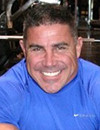
- Darryn Willoughby
- PhD, CSCS, FACSM, FISSN
Advisor, International Society of Sports Nutrition (ISSN)
Associate Professor, School of Education, Baylor University
Lecture material Download
(Participants Only)
S1-1Friday, January 27, 1:00pm~4:15pm
Protein and amino acid supplementation for increasing muscle protein synthesis and hypertrophy: implications for resistance training and nutritional strategy
The primary purpose of this lecture will be to discuss the role that protein and amino acid supplementation plays in increasing muscle protein synthesis and the impact it has on hypertrophy processes in conjunction with resistance training. Included in this will be an emphasis on using nutrition strategy and nutrient timing to affect hormones involved in maintaining whole body anabolism. The secondary purpose of this lecture will be to discuss various resistance training strategies known to significantly impact muscle strength and mass and how nutrition strategy can be used to augment muscle adaptations to resistance training.
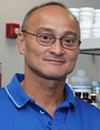
- Jose Antonio
- PhD, CSCS, FNSCA, FISSN
Chairman, International Society of Sports Nutrition (ISSN)
Former NSCA Board Member
Associate Professor, Exercise and Sports Science, Nova Southeastern University, Davie Florida USA
Lecture material Download
(Participants Only)
S1-2Friday, January 27, 1:00pm~4:15pm
High Protein Diets - Health and Body Composition
This lecture will be composed of 4 parts. It will start with a real life case study, the story of twins, as the first topic. Then the history of ‘high Protein’ diets will be reviewed. As the third part, some of the topics that people want to clarify such as “why the current definition is wrong?”, “What happens when you eat 4.4 g per kg per day of protein?”, “What happened when you eat 3.4 g per kg per day of protein AND change your training program?”, or “Is consuming a high protein diet for 1 year healthy?” will be discussed. The lecture will be closed with the part of summary and conclusions.
Lecture material Download
(Participants Only)
L3-3ASunday, January 29, 11:30am~12:30pm
Sports nutrition and supplement strategies for
the Endurance Athlete
In this lecture, the strategies of nutrition and supplement for the endurance athlete will be presented. The types of endurance events may be different and S&C coaches, at endurance events, should know what pure cardiac output is and what power is. Those will be reviewed in the middle of the lecture. Basic macronutrient strategies, nutrient timing for endurance events, and supplements that work will also be discussed. At the end of the lecture, some of case studies will be looked over as models of practical application of sports nutrition and supplement strategies.
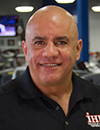
- Juan Carlos Santana
- Med, CSCS, former NSCA vice president
The Institute of Human Performance (IHP) (U.S.A.)
Lecture material Download
(Participants Only)
H1-2Friday, January 27, 1:00pm~2:30pm
Bodyweight Training: the forgotten workout
In this lecture, knowledge of bodyweight training and progressions of body training will be mainly presented. The topic “The performance continuum and implications” will be the first session. After that, the advantage of bodyweight training will be discussed. With the basic knowledge of bodyweight training, the system of progressions and regressions in exercise will be reviewed. Once total body progressions of the exercise are presented, progressions both in the upper and lower body will be looked over. In the last potion of the lecture, programs and periodization of bodyweight training, including metabolic protocols, will be introduced.
Lecture material Download
(Participants Only)
H2-3ASaturday, January 28, 1:15pm~2:45pm
Gorilla Strength - Strength Training for Collision Sports
In this lecture, “Gorilla Strength, strength training for collision sports,” will be presented. The topic “The performance continuum and implications” will be the first session. After that, over views of functional strength and progressions/regressions system in the exercise will be discussed. The systems of the exercise will include isometric training, partial training, stage pumps, negatives of the training, and build-ups. In the end potion of the lecture, programs and periodization of “Gorilla Strength” will be presented.
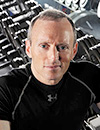
- Brad Schoenfeld
- PhD, CSCS, NSCA-CPT
NSCA Board Member
Assistant Professor, Department of Health Sciences, Lehman College, City University of New York
Lecture material Download
(Participants Only)
H1-3Friday, January 27, 2:45pm~4:15pm
The back squat – A joint-by-joint assessment to
optimize performance
This lecture will be composed of 5 parts, such as the overview of the back squat, posture of the upper body, posture of the lower body, movement mechanics, and summary. The session of posture of the upper body will include positions of the head, thoracic, and trunk. The session of posture of lower body will include positions of the hip, knee, and foot and tibial progression angle.
Lecture material Download
(Participants Only)
H2-4ASaturday, January 28, 3:00pm~4:30pm
Combining exercises for maximal muscle growth
This lecture will be composed of 4 parts, such as the overview of applied anatomy, exercise of the upper body, exercise of the lower body, and summary. The session of exercise of the upper body will include exercises of the chest, back, shoulder, and elbow. The session of exercise of lower body will include exercises of the thigh and calf.
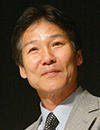
- Toshio Moritani
- PhD, President of NSCA Japan
Emeritus Professor, Kyoto University, Visiting Professor, Kyoto Sangyo University, Visiting Professor, Chukyo University
Lecture material Download
(Participants Only)
L2-1ASaturday, January 28, 10:00am~noon
Muscles as a great organ
In addition to skeletal muscles are the organ that burns large amounts of carbohydrates and lipids, they have recently been discovered to contain sarcolipin, which produces more heat than the brown fat cells that regulate the body's temperature. Furthermore, muscular activity stimulates a variety of physiologically active substances such as brain-derived neurotrophic factors that control memory and learning ability in the cerebrum's hippocampus. It seems that muscle atrophies lead to degenerations of bones, the brain, and the heart and other circulatory organs. In this lecture, the latest knowledge in an easy-to-understand manner to understand the mechanism will be presented.
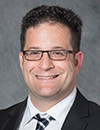
- G. Gregory Haff
- NSCA President, PhD, CSCS, *D, FNSCA
Course Coordinator, Strength and Conditioning
Associate Professor, School of Exercise and Health Science, Edith Cowan University (Australia)
Lecture material Download
(Participants Only)
L2-2ASaturday, January 28, 11:15am~12:15pm
Bridging the Gap between Science and Application
This lecture is designed to examine how since can be used to enhance sport performance. Particularly important to this discussion is the role of the sports scientist in the overall high performance team and how they serve to help translate scientific evidence into applied models that are able to be used by coaches. The importance of a multi-disciplinary team will also be discussed and how these teams can be used to enhance the collection of meaningful data that can inform the performance of athletes
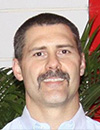
- Patrick McHenry
- MA, CSCS, *D, RSCC, USAW
NSCA Board Member
Head Strength and Conditioning Coach, Castle View High School (U.S.A.)
Lecture material Download
(Participants Only)
L2-3ASaturday, January 28, 1:15pm~2:45pm
Developing Athletes from the ground up by applying
the Principles of Long Term Athletic Development
In this lecture Patrick will review Long Term Athletic Development and its application to Adolescent Athletes. He will talk about applying Long Term Athletic Development to your strength training program, how to progress the lifts and how Long Term Athletic Development can be used when develop a speed agility program.
Lecture material Download
(Participants Only)
H2-5ASaturday, January 28, 4:45pm~5:45pm
Teaching the Clean
In this lecture Patrick will go over the progression for teaching the Clean. He will also go over assisting lifts to help with the Clean. This is a hands on session so the participants will perform the lifts.
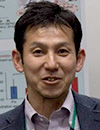
- Hiroshi Hasegawa
- Ph.D.
Professor, Graduate School of Integrated Arts and Sciences, Hiroshima University
Lecture material Download
(Participants Only)
L2-3BSaturday, January 28, 1:15pm~2:45pm
Athletic performance under conditions of extreme heat
and associated countermeasures
Striving toward effective heat countermeasures based on the latest research
In recent years, most sporting events have been held under extremely tough conditions, for example in extremely hot environments, at high altitudes, or under tight schedules that pack competitions into a short period of time as much as possible. The 2020 Tokyo Olympics and Paralympics are no exception to this trend, and those events are predicted to be the worst in Olympic history from the standpoint of event timing, environmental conditions, and the burden on athletes. The developments of countermeasures for tough situations including heat environment are essential. In this presentation, This lecture focuses on the mechanisms of reduced athletic performance due to heat related illness by hot environments and strategies for the heat environment, such as hydration, body cooling, acclimatization, and recovery method, with latest evidences and application examples in practice.

- Takashi Okada
- MS, CSCS, Physical Therapist, Japan Sports Association Certified Athletic Trainer
Associate Professor, Department of Physical Education, Musculoskeletal Traumatology Lab at Nippon Sport Science University
Lecture material Download
(Participants Only)
H2-3BSaturday, January 28, 1:15pm~2:45pm
Trunk conditioning to prevent back pain
Thinking about undulating trunk motion
The history of the evolution of organisms and animals is mind-bogglingly long. During most of the time , the trunk has been as one of locomotorium that functions to move. It has changed its functions depending on requirements of its owner. In many vertebrates, such as fish, salamanders (amphibians), and lizards and snakes (reptiles), the trunk has functions to move. However, opportunities to utilize this original function of the trunk reduces in human walking in two legs. This presentation focuses on the functions and its related muscle groups. Based on considerations of atrophies in muscles around the vertebrae and its related problem, back pain, conditioning techniques for preventions of back pain will be introduced and practice those by attendees each other.

-
Guest Speaker
Gina Lombardi - NSCA-CPT, NSCA Personal Trainer of the Year award recipient (2003)
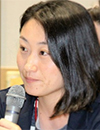
-
Guest Speaker
Chieko Okada - NSCA-CPT, *D Certification Examiner, NSCA Japan Certification Examination Committee Member

-
Coordinator
Etsuko Ogasawara, Ph.D. - Chairman of the Board of Directors, JWS (Japanese Association for Women in Sport)
Professor of Health and Sports Science, Juntendo University Graduate School
S2 Saturday, January, 28th, 12:15~14:45
Women's Luncheon: Career Development for Female Training Coach
This seminar will cover the results of a questionnaire on careers of female strength coaches targeting female members of National Strength and Conditioning Association (NSCA) Japan. Two female coaches will be guest speakers at the event and they will talk about their experiences of multi-career, being in different roles at the same time in their life such as “Mother and Coach”. Attendees will also be able to share the stories how those speakers overcome the difficulties.
The program will feature a discussion on what is required to foster an environment where women coaches can be more active and work as their best in the field. This participation-based seminar will allow for direct opinion-sharing.
* Please note that this program is open to women only.
* Attendees will be provided with a box lunch.
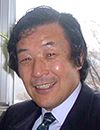
- Tetsuo Fukunaga
- PhD, Chairperson of Editorial Committee of NSCA Japan, former President of NSCA Japan
Specially-appointed Professor, National Institute of Fitness and Sports in Kanoya
Lecture material Download
(Participants Only)
L2-4ASaturday, January 28, 3:00pm~4:30pm
Resistance training and stretching effect on
viscoelastic properties of tendinous tissues
It is of interesting and significant in human movement sciences to clarify whether the viscoelastic properties of tedinous tissues are affected by the stretching and resistance training. Recent studies indicated that the resistance training for 8 weeks induced significant increase of stiffness by 19%, and the stretching training for 3 weeks produced no significant changes in the stiffness but significantly decreased hysteresis from 20 to 12 %. If the resistance training with stretching exercises were carried out on plantar flexor muscles, the hysteresis decreased by 17% without changes in the stiffness.
These results suggested that the resistance training increased the stiffness of tendinous tissues and the stretching affected the viscosity of tendon but not the elasticity.
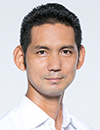
- Norikazu Hirose
- Ph.D., Japan Sports Association Certified Athletic Trainer
Professor, Faculty of Sport Sciences, Waseda University
Lecture material Download
(Participants Only)
L2-4BSaturday, January 28, 3:00pm~4:30pm
Recognizing and fostering talent in female soccer players
Talent identification and talent development in Japanese female soccer players
There are four key stages that have been proposed in sourcing top-level female soccer players: detection, identification, selection, and development. Sports scientists and conditioning specialists could support coaches and players to develop methods for “talent identification” and “development” of their athletic performance. In this lecture, Current situations regarding talent identification and development from a conditioning point of view in Japanese female soccer players will be presented.
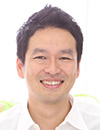
- Taro Toyoda
- MS, Japan Sport Council
Lecture material Download
(Participants Only)
H2-4BSaturday, January 28, 3:00pm~4:30pm
What determines whether coordination training succeeds or fails?
Five points for success
Coordination training was developed in the former East Germany during the 1960s to improve athletic performance in terms of body control and adjustment and now practiced in athletes all over the world. While specific practices differ among the country or sports, successful coordination trainings have certain shared traits. In this lecture, five key points that are necessary to make those varieties of coordination training effective will be presented and demonstrated with examples of the training practiced in a real field.
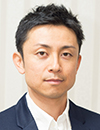
- Katsuyuki Gohara
- CSCS, NSCA-CPT, Selected Coach, NSCA Japan Kyushu Regional Director
NASM-PES, Practitioner of Acupuncture and Moxibustion
Representative Director, IMPROVE Inc.
Lecture material Download
(Participants Only)
L2-4CSaturday, January 28, 3:00pm~4:30pm
Basic principles for creating a business blueprint
From surviving to winning
In the S&C field, people tend to shun any discussion of business, and it seems that many of them aren’t familiar with business-related information. The poet Matsuo Basho spoke of “fluidity and immutability.” People today tend to rush to embrace fluidity in the form of the current trend of establishing micro-gyms and studios and they are forgetting the importance of immutability. Perhaps the same is suggested by the results of a questionnaire by NSCA, which indicate that many respondents would like to have more opportunities for learning business skills and expertise. Just as we learn the basics in disciplines such as anatomy, there are principles that comprise the foundation of business. In this lecture, some lessons, based on experiences of Mr.Gohara, that should be learned to ensure not survive but win will be presented.
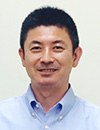
- Tadayoshi Takahashi
- ATC, ABC C.Ped, PRI-PRT
Owner, Guardians Athletic Training & Therapy
Former Athletic Trainer, Waseda Jitsugyo School
Lecture material Download
(Participants Only)
L2-5BSaturday, January 28, 4:45pm~5:45pm
The relationship between foot type and the training error during
squatting
Although it is widely understood that the relationship between errors while performing squats or single leg squats, for example inward-facing knees or excessively outward-facing toes, are related to the muscular strength and range of motion of the hip joint, such errors are also significantly affected by the feet. By good understanding of the biomechanics of the hip joint and pelvic girdle and deepening their understanding of the biomechanics of the foot and varieties of foot types, instructors can reduce the risks of injury when instructing athletes. In this lecture, basic foot types and training errors from the standpoint of the foot will be presented.
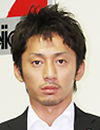
- Kouhei Makino
- CSCS, Selected Coach of NSCA Japan
Head Performance Specialist, Weider Training Lab
Lecture material Download
(Participants Only)
H2-5BSaturday, January 28, 4:45pm~5:45pm
The Beauty
Achieving beautiful posture and body contours
An unfocused approach to training is not sufficient to foster beautiful posture and body contours. Rather, such an approach will result in poor condition. Although the various muscles in the human body function in exquisite balance, the movements of individuals exhibit idiosyncrasies that not only undermine that balance and trigger functional impediments, but also compromise posture and the body's contours. Consequently, it is important to train muscles based on the body's condition. In this lecture, Practical techniques will be presented while explaining the underlying theoretical background.
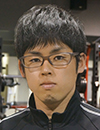
- Jun Seino
- MS, CSCS, NSCA-CPT, Registered Dietitian, Japan Sports Association Certified Sports Nutritionist
Head Sports Nutritionist, Weider Training Lab
Lecture material Download
(Participants Only)
L2-5CSaturday, January 28, 4:45pm~5:45pm
A practical approach to nutrition that can be practiced
by exercise instructors
It is known that nutrition has a major impact on the effectiveness of exercise prescribed for clients. Therefore, instructors may need to treat nutrition-related needs that may be in the interest of some clients, depending on their needs. In this lecture, those nutrition-related needs will be introduced based on examples from the field in top sports and presented a specific, practical approach to basic nutrition issues that can be implemented by exercise instructors.
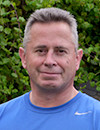
- Ian Jeffreys
- PhD, FNSCA, ASCC, CSCS, *D, NSCA-CPT, *D
Senior Instructor, Faculty of Life Sciences and Education, University of South Wales (UK)
Principal, All-Pro Performance
Lecture material Download
(Participants Only)
L3-1ASunday, January 29, 9:00am~10:00am
Maximizing Performance
– A game speed approach to developing speed and agility
Speed and agility have long been seen as critical components of high performance in a range of sports and are therefore key components of a performance development program. However, how well is our current training transferring to enhance game performance? On field success in sports requires the ability to solve sport specific problems and utilize speed and agility within the specific context of the game. Unfortunately, the development of these capacities is often missing from traditional speed and agility programs. Learn how adding a task based approach to an athletes speed and agility training can help ensure optimal transfer from training to game performance.
Lecture material Download
(Participants Only)
H3-3Sunday, January 29, 11:30am~12:30pm
Maximizing Performance
– A game speed approach to developing speed and agility
Speed and agility have long been seen as critical components of high performance in a range of sports and are therefore key components of a performance development program. However, how well is our current training transferring to enhance game performance? On field success in sports requires the ability to solve sport specific problems and utilize speed and agility within the specific context of the game. Unfortunately, the development of these capacities is often missing from traditional speed and agility programs. Learn how adding a task based approach to an athletes speed and agility training can help ensure optimal transfer from training to game performance. This practical session will demonstrate how to put the theory covered in the lecture into practice and provide take home exercises that can be used immediately with your athletes.
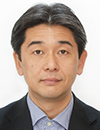
- Junichi Okada
- Ph.D., CSCS, NSCA Japan Vice Chairman
Professor, Faculty of Sport Sciences, Waseda University
Lecture material Download
(Participants Only)
H3-1Sunday, January 29, 9:00am~10:00am
Refining the second pull
Upskilling of the power clean
In the past, Olympic lifting techniques such as the power clean were shunned due to their technical difficulty, and it seemed that their adoption in Japan had lagged compared to Europe and the U.S. However, long-running promotional and awareness-raising efforts in recent years by people who work in the sport, Olympic lifting are gradually entering into a training scene. Nonetheless, there is variance in the results of explosive power development depending on the proficiency of the athletes practicing these techniques. General observations about key points in building second-pull skills will be demonstrated.
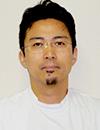
- Yoshimasa Setoguchi
- MD, former NSCA Japan Director
Director, Midori Clinic
Lecture material Download
(Participants Only)
L3-1BSunday, January 29, 9:00am~10:00am
Mechanisms of throwing and associated injuries
New Concept : Throwing Plane Concept
The throwing plane concept is a new concept in throwing injuries and performance. the causes of throwing-related injuries in the shoulder and elbow with reference to throwing phases and also the desirable and undesirable characteristics of throwing form from a medical standpoint will be introduced. Good throwing form not only imposes low stress on the shoulder and elbow, but also contributes to good performance due to high motion efficiency. Understanding how the thrower is using his body while throwing the ball is useful in establishing rational strategies for not only rehabilitation, but also conditioning and training.
NSCA Japan Special Project: Career Booster Short Session Sunday, January 29, 11:00am~11:30am
The future role and position of trainers in orthopedic hospital:
an overview of systems at Midori Clinic and recommendations
At present, the number of specialized trainers (including NSCA-certified personnel) in medical settings is on the rise, while at the same time their position at this field remains ambiguous. This means that in many cases the talents of these individuals are not being utilized to the fullest. At the Midori Clinic, where I serve as director, the environment is such where our trainers are able to work alongside medical staff with equal status. Given that they play an extremely important role, it goes without saying that trainers are in no way inferior to medical personnel.
By introducing the activities of our clinic here at this international conference, it is our hope to provide some recommendations on boosting the value associated with specialized trainers working in the medical field.
* Advance registration is not required to attend this short session. If you wish to attend, come directly to Convention Hall A.
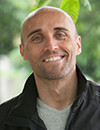
- Inigo Mujika
- PhD
Associated Professor, Department of Physiology, University of the Basque Country (Spain)
Lecture material Download
(Participants Only)
L3-2ASunday, January 29, 10:15am~11:15am
STRENGTH TRAINING FOR ENDURANCE PERFORMANCE
Performance in most endurance events is determined by the maximal sustained power production for a given competition distance, and the energy cost of maintaining a given competition speed. Strength training could thus contribute to enhance endurance performance by improving the economy of movement, delaying fatigue, improving anaerobic capacity and enhancing maximal speed. In this lecture, Prof. Mujika will outline the scientific bases of strength training for endurance performance; the mechanisms for strength training induced endurance gains; the methods and the nutritional recommendations to optimize concurrent strength and endurance training.
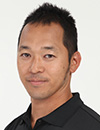
- Tohru Aoki
- Vice Chairman, NSCA Japan Certified Examiner Committee, CSCS, *D
Strength & Conditioning Coach, Ryukoku University
Lecture material Download
(Participants Only)
H3-2Sunday, January 29, 10:15am~11:15am
Speed training for team sports
Improving speed based on a consideration of a variety of positions
For athletes, speed is an important factor that affects their performance in competition. To gain speed, S&C coaches oversee not only strength training sessions in the weight room, but also speed training sessions in the field. In this lecture, the speed training theory along with technique drills and sprint drills based on that theory with references to programs that have been implemented for team sports (particularly American football) will be introduced.
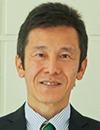
- Seiji Maeda
- Ph.D.
Professor, Faculty of Health and Sports Sciences, University of Tsukuba
Lecture material Download
(Participants Only)
L3-2BSunday, January 29, 10:15am~11:15am
Preventing arteriosclerosis with exercise to facilitate healthy living
Central arteries such as the aorta harden with age. Arterial hardening is a major risk factor for cardiovascular disease. In the past, increased arterial hardening was considered a symptom of old age, and no attention was paid to the relationship between regular exercise and such hardening. However, regular aerobic exercise has been found to reduce arterial hardening, leading to new attention to the importance of exercise. In this lecture, knowledge about the effects of regular exercise on arterial hardening will be presented.
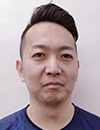
- Naoki Kawamori
- Ph.D., CSCS
Japan Institute of Sports Sciences
Lecture material Download
(Participants Only)
L3-3BSunday, January 29, 11:30am~12:30pm
Approach to peaking and program design
Regulating athletes’ training load so that their peak fitness coincides with key competitions is an important role of the S&C coach. In this talk, Dr. Kawamori will describe some approaches that should be understood in order to ensure peaking works (for example, fitness fatigue theory) along with associated scientific knowledge, and he will introduce some guidelines for putting peaking into practice. In addition, he will discuss how he planned and implemented peaking for some of the athletes who participated in the Rio Olympics.
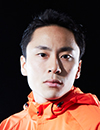
- Yuki Ota
- Fencer
MORINAGA&CO.,LTD.
Silver medal (individual foil), 2008 Beijing Olympics; silver medal (team foil), 2012 London Olympics; gold medal (individual foil), 2015 World Fencing Championships
L3-4ASunday, January 29, 13:30pm~14:30pm
The challenges in four Olympics
I'd like to give you an overview with some episodes of the efforts and developments that led up to my present situation, specifically the reasons I started fencing, how I came to try for the Olympics, how I maintained myself motivated at a high level over years through four Olympics, and the changes in myself and the environment around me through the experience.
I would also like to talk about young athletes for 2020 and beyond, including the environment and support conditions that tend to produce Olympic athletes, ideal coaching and training from the perspective of competitors, and more.
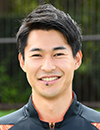
- Shota Iizuka
- MIZUNO TRUCK CLUB, MIZUNO Corporation
Silver medal, 2016 Rio Olympics
L3-4ASunday, January 29, 9:00am~12:30pm
Japan Society of Sports Performance Research:
Symposium of Japan Society of Sports Performance Research
Sports performance study expressing knowledge in real field of trainers
- Shota Iizuka (silver medalist in the 4×100 meters relay in the Rio Olympics) will be on stage.
9:00am~10:15am
Symposium Ⅰ
Sports performance study of field and track leading team Japan to silver medal in 2016 Rio Olympics.
-Case study : Support for Syota Iizuka, a silver medalist in 400m relay-
<Speakers>
Shota Iizuka (MIZUNO TRUCK CLUB, MIZUNO Corporation; Silver medal, 2016 Rio Olympics)
Yasuhiro Toyoda (Chuo University)
Akifumi Matsuo (Professor, National Institute of Fitness and Sports in Kanoya)
10:30am~12:30am
Symposium Ⅱ
Sports performance study expressing knowledge in real field of trainers.
-A process of sports performance study in real fields-
<Speakers>
Masayoshi Yamamoto (Professor, National Institute of Fitness and Sports in Kanoya)
Hirofumi Kintaka (Professor, National Institute of Fitness and Sports in Kanoya)
<Moderator>
Maeda Akira (Professor, National Institute of Fitness and Sports in Kanoya)




















